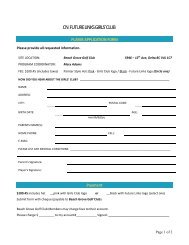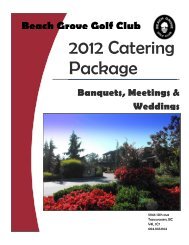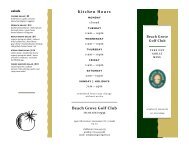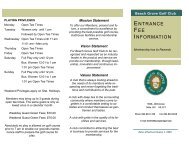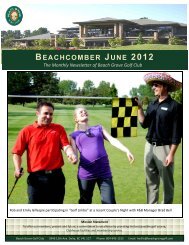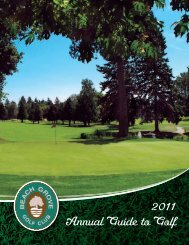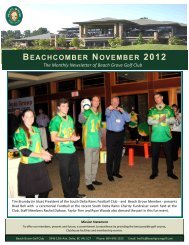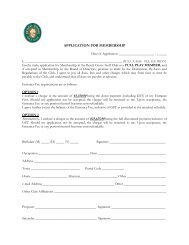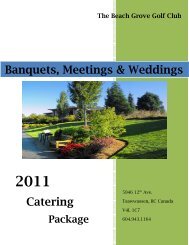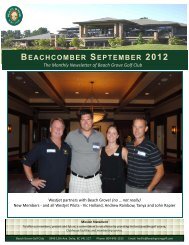USGA Green Section Turf Advisory Service Visit - Beach Grove Golf ...
USGA Green Section Turf Advisory Service Visit - Beach Grove Golf ...
USGA Green Section Turf Advisory Service Visit - Beach Grove Golf ...
Create successful ePaper yourself
Turn your PDF publications into a flip-book with our unique Google optimized e-Paper software.
<strong>Beach</strong> <strong>Grove</strong> <strong>Golf</strong> Club -3-<br />
May 4, 2005<br />
area as possible for hole locations. Please note the enclosed reprint taken from the latest <strong>USGA</strong><br />
<strong>Green</strong> <strong>Section</strong> Record discussing the many non-agronomic factors that should be taken into<br />
account when contemplating further lowering of mowing heights to achieve green speeds that<br />
are in excess of major championship speeds 15-20 years ago.<br />
• Eliminate daily green speed posting. As can<br />
be noted in the enclosed reprint, golfers of all<br />
skill levels have difficulty telling the difference<br />
of 6” at any speed and have increasing difficulty<br />
as green speeds approach 10’ of determining a<br />
1’ difference in speed. The <strong>USGA</strong> Stimpmeter<br />
was designed to give the golf course<br />
superintendent a measuring device for green<br />
consistency, not as a tool to achieve fast greens<br />
or for daily green speed posting as these<br />
numbers mean virtually nothing to the vast<br />
majority of players and offer no aid to those Consistency, yes – daily readings, no!<br />
that play the greens that day. Here are just a few facts that favor the elimination of this practice:<br />
1. To provide a true reading you should test every green, thereby wasting valuable labor.<br />
2. The speed of a green changes during the day from normal growth.<br />
3. The speed of a green changes dramatically during the day, especially when Poa annua<br />
seedheads are forming.<br />
4. The speed of a green changes during the day based on the type of roller used.<br />
5. The practice green is usually 1’ faster than the regular greens due to foot traffic<br />
around the holes. If this is the tested green, it is not a true indicator.<br />
6. Regular hole locations in the green centers are usually faster than perimeter locations<br />
due to foot traffic.<br />
7. The degree of slope dramatically changes the perceived speed of individual greens.<br />
8. Shaded greens are usually a different speed than full sun greens, especially in the<br />
afternoon.<br />
9. Wet sand from topdressing has a major effect on green speed when compared to dry<br />
sand.<br />
10. Daily Stimpmeter readings are generally taken early in the morning on one green.<br />
Which one and what part of the green is the average for all the greens that day<br />
The game of golf is supposed to be a test of skill that requires both physical and mental ability<br />
to adapt to the various challenges the golf course and nature provide. Providing players with<br />
numbers that mean very little based on the time they play only results in negative questioning of<br />
the golf course superintendent when the player may have a bad day on the greens and is a waste<br />
of valuable time that should be spent supervising the staff. Also, note the enclosed reprint on<br />
this topic.<br />
• Do be obsessed with green smoothness! While the obsession with fast greens is generally<br />
driven by those with lower handicaps (usually a small, yet vocal minority at most private clubs),






